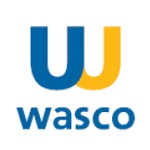Dialog Group Bhd said it was still bidding with potential Australian partner Roc Oil Co Ltd for contracts pertaining to Petroliam Nasional Bhd's (Petronas) marginal oilfield developments.
The company told Bursa Malaysia yesterday that Roc Oil was its business partner and was presently tendering for upstream oil and gas prospects in Malaysia with the possibility of a joint venture between the two companies if the tender was successful.
“To date, Dialog and Roc Oil are still in the bidding process and have not entered into a joint-venture agreement and neither parties have received any letter of intent for marginal oilfield projects from Petronas,” it said.
The company was responding to a business daily report citing sources that both parties were on the verge of bagging marginal oilfield projects under the risk-service contract (RSC) model from Petronas for Balai and Bentara, located off the coast of Sarawak.
It was reported by other international publications that the parties had received a letter of intent for the cluster development of the two fields which involved four wellhead platforms plus a floating storage offloading or a floating production, storage and off-loading vessel.
Maybank Investment Research said in a report yesterday that if the RSC materialised, it would mark Roc Oil's Malaysian debut and Dialog's first upstream oil and gas venture.
“Bentara is located in Block SK-6, previously operated by Occidental Petroleum, while Balai is near to Bentara. Bentara discovery well flowed 1,200 barrels per day of oil and 9.8 mmscfd (million standard cubic feet per day) of gas during a well test,” it said.
The brokerage added that it was positive on the development and reckoned that Dialog would provide mercury extraction/handling services for these fields.
To re-cap, the first RSC was awarded by Petronas in February to a consortium formed by Kencana Petroleum Bhd and SapuraCrest Petroleum Bhd, together with Petrofac Energy Developments Sdn Bhd, for the development and production of Berantai marginal oil field, located 150km offshore Terengganu.
The US$800mil RSC to be handled by the three partners is for a nine-year period starting Jan 31. The project is targeting its first gas by the end of this year, with the first development phase of 18 wells expected to be completed by end-2012.
 Petronas Chemicals Group Bhd (PCG), the leading integrated petrochemicals producer in Malaysia, is expected to see continued demand for its products from China, India and the Asia Pacific.
Petronas Chemicals Group Bhd (PCG), the leading integrated petrochemicals producer in Malaysia, is expected to see continued demand for its products from China, India and the Asia Pacific.








 This is the second such protest held in Kuala Lumpur since the first- held during the last Parliament meeting in March - barely two weeks before an international expert panel will spend six days here to scrutinise the project's safety aspects.
This is the second such protest held in Kuala Lumpur since the first- held during the last Parliament meeting in March - barely two weeks before an international expert panel will spend six days here to scrutinise the project's safety aspects. FRU officers formed human barriers at the junction turning into Jalan Yap Kwan Seng, where the high commission office is located, but otherwise allowed the protesters to go about their business.
FRU officers formed human barriers at the junction turning into Jalan Yap Kwan Seng, where the high commission office is located, but otherwise allowed the protesters to go about their business. “On moral grounds, Lynas is taking advantage of our outdated environmental law. Because of the loophole in the law, it is easy for Lynas to bring in the ore from other places.
“On moral grounds, Lynas is taking advantage of our outdated environmental law. Because of the loophole in the law, it is easy for Lynas to bring in the ore from other places. Er (left) pointed out that Taiwan's media reported that the Malaysian government was "very keen" to take on the rejected project.
Er (left) pointed out that Taiwan's media reported that the Malaysian government was "very keen" to take on the rejected project.

 Jawatankuasa itu mengedarkan 1,000 kuntum bunga, termasuk bunga kekwa untuk membangkitkan kesedaran bahawa radiasi daripada kilang nadir bumi boleh menjejaskan anak dalam kandungan.
Jawatankuasa itu mengedarkan 1,000 kuntum bunga, termasuk bunga kekwa untuk membangkitkan kesedaran bahawa radiasi daripada kilang nadir bumi boleh menjejaskan anak dalam kandungan.
 Mereka mendakwa ini kali keempat perhimpunan aman seumpama itu diadakan.
Mereka mendakwa ini kali keempat perhimpunan aman seumpama itu diadakan. Pada perhimpunan ini, Nasaruddin dan Suhaimi mendakwa Umno cuba membawa dimensi perkauman dalam isu kilang pemprosesan nadir bumi itu.
Pada perhimpunan ini, Nasaruddin dan Suhaimi mendakwa Umno cuba membawa dimensi perkauman dalam isu kilang pemprosesan nadir bumi itu. Hew Yoon Tat (kiri) - yang menggerakkan kempen antiradionaktif untuk projek nadir bumi pertama di Malaysia di Bukit Merah, Perak sejak 1980 - percaya pembinaan loji baru tidak akan mendapat sokongan awam.
Hew Yoon Tat (kiri) - yang menggerakkan kempen antiradionaktif untuk projek nadir bumi pertama di Malaysia di Bukit Merah, Perak sejak 1980 - percaya pembinaan loji baru tidak akan mendapat sokongan awam. Dalam kes ARE, tambahnya, penduduk setempat tidak mudah bersetuju dengan tahap keselamatannya ekoran "panel pakar" kedua-dua pihak membuat kesimpulan yang saling bertentangan.
Dalam kes ARE, tambahnya, penduduk setempat tidak mudah bersetuju dengan tahap keselamatannya ekoran "panel pakar" kedua-dua pihak membuat kesimpulan yang saling bertentangan.
